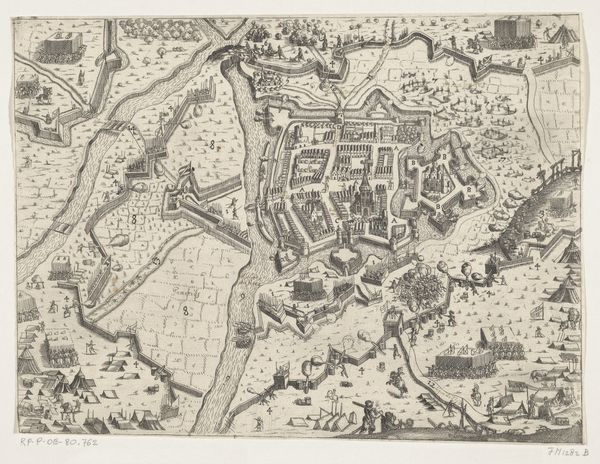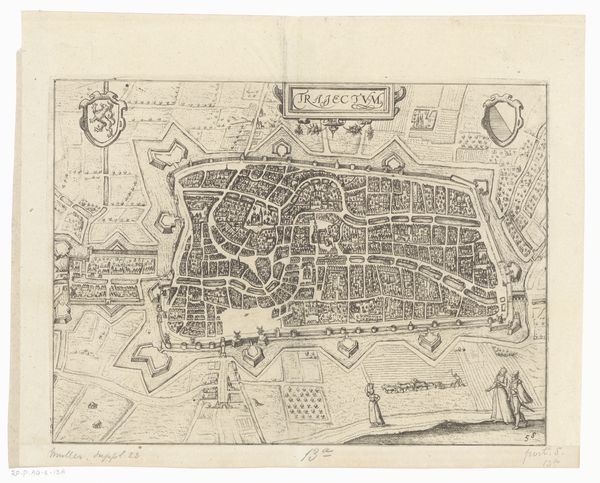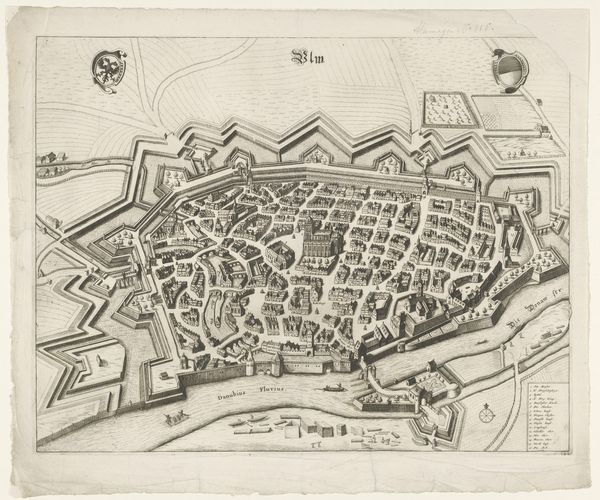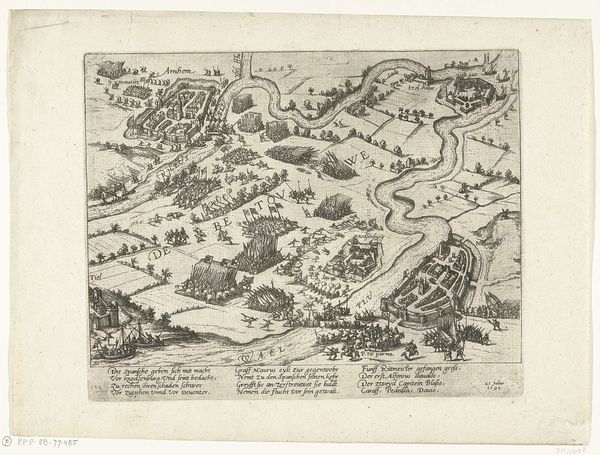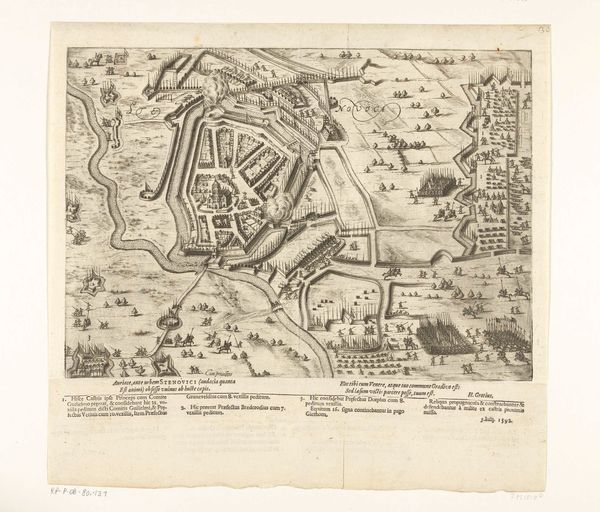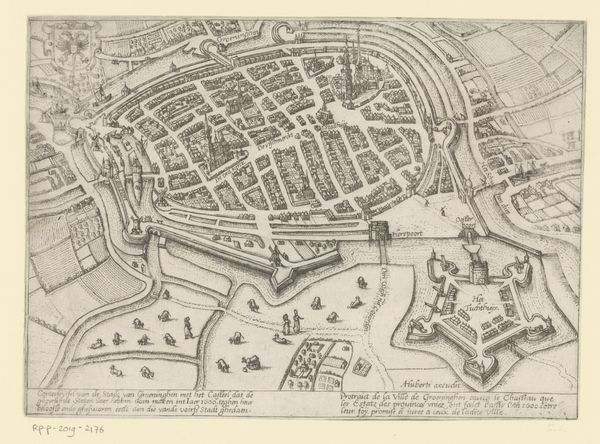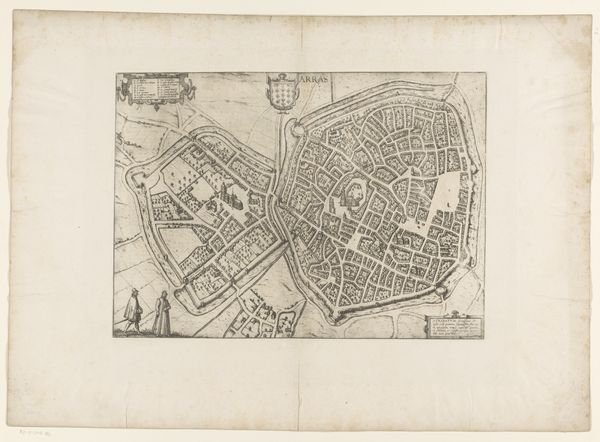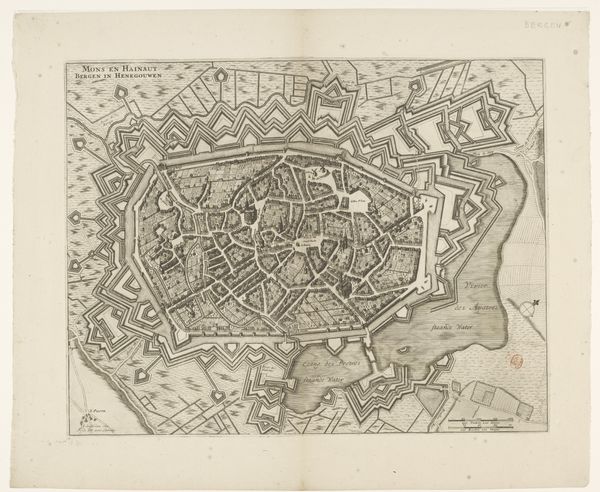
drawing, print, ink, engraving
#
drawing
#
narrative-art
#
baroque
#
dutch-golden-age
# print
#
old engraving style
#
landscape
#
perspective
#
ink
#
geometric
#
cityscape
#
history-painting
#
engraving
Dimensions: height 172 mm, width 274 mm
Copyright: Rijks Museum: Open Domain
This detailed etching, made in 1602 by an anonymous artist, captures the siege and capture of Grave by Maurits, a pivotal moment in the Eighty Years' War. The map is a complex intersection of military strategy, territorial ambition, and cultural identity. It illustrates not just a battle, but a broader struggle for independence and religious freedom. The Dutch revolt against Spanish rule was fueled by deep-seated tensions over autonomy, religious expression, and economic control. Consider the emotional weight carried by this image, not only for those who fought but for a nation forging its identity amidst conflict. How might the people of Grave have felt, seeing their town become a pawn in a much larger game of power? How did such images influence Dutch national identity? By immortalizing this victory, the etching becomes a symbol of Dutch resilience, pushing back against the dominant narratives of the Spanish empire. It serves as a testament to the human cost of war.
Comments
No comments
Be the first to comment and join the conversation on the ultimate creative platform.
